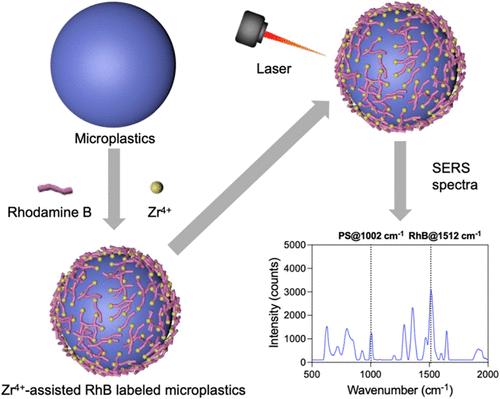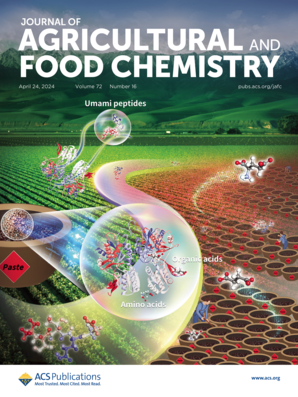Rapid On-Site and Sensitive Detection of Microplastics Using Zirconium(IV)-Assisted SERS Label
IF 5.7
1区 农林科学
Q1 AGRICULTURE, MULTIDISCIPLINARY
引用次数: 0
Abstract
Microplastics have emerged as significant pollutants in terrestrial and marine ecosystems, with their accumulation posing a threat to human health through biomagnification along the food chain. Developing a rapid, on-site, and sensitive method for detecting microplastics in agri-food and environmental systems is important for assessing and minimizing their potential risks. In this study, we developed a novel surface-enhanced Raman spectroscopy (SERS) technique for the rapid, on-site, and ultrasensitive detection of microplastics. Our innovative technique incorporated Zr4+-assisted SERS label strategies, utilizing rhodamine B as a Raman reporter to improve microplastics analysis. By utilizing Zr4+-assisted SERS label approaches, we can achieve qualitative and ultrasensitive quantification of 10 μm polystyrene microplastics (PSMPs) at concentrations as low as 0.1 ppm with a detection limit of 1 ppb. Furthermore, this approach allows for detecting microplastics in real-world scenarios, with recovery rates exceeding 90% for polystyrene microplastic concentrations ranging from 5 to 30 ppm in tap water systems. When integrated with a portable Raman spectrometer, this innovative approach showcases the rapid, on-site, accurate, and sensitive detection of microplastics and has great potential for analyzing various types of microplastics in agri-food and environmental systems.

求助全文
约1分钟内获得全文
求助全文
来源期刊
CiteScore
9.90
自引率
8.20%
发文量
1375
审稿时长
2.3 months
期刊介绍:
The Journal of Agricultural and Food Chemistry publishes high-quality, cutting edge original research representing complete studies and research advances dealing with the chemistry and biochemistry of agriculture and food. The Journal also encourages papers with chemistry and/or biochemistry as a major component combined with biological/sensory/nutritional/toxicological evaluation related to agriculture and/or food.

 求助内容:
求助内容: 应助结果提醒方式:
应助结果提醒方式:


